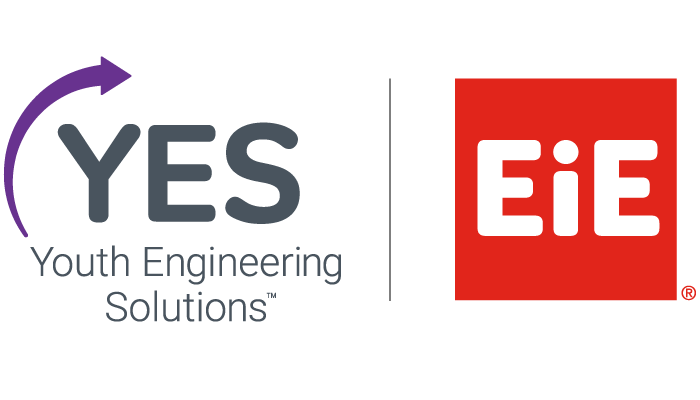Engineering is Elementary
Engineering and Technology Lessons for Children. Engineering is Elementary Website
Children are born engineers—they are fascinated with building, with taking things apart, and with how things work. However, K-12 educational settings have traditionally done little to develop children’s engineering and technological literacy. The Engineering is Elementary (EiE) project fosters engineering and technological literacy among elementary school students and educators. EiE has created a research-based, standards-driven, and classroom-tested curriculum that integrates engineering and technology concepts and skills with elementary science topics. EiE lessons not only promote science, technology, engineering, and mathematics (STEM) learning in grades 2-5, but also connect with literacy and social studies. To date, EiE has reached over 2.7 million students and 33,000 teachers and is presently used in all fifty states.
Each EiE unit takes about 6-8 hours of instructional time to complete. EiE has developed materials for 20 elementary science school topics and engineering fields. All EiE units are designed to meet the ITEEA Standards for Technological Literacy.
At its core, EiE is designed to have students engineer. The program develops interesting problems and contexts and invites children to have fun as they use their knowledge of science and engineering to design, create, and improve solution
Project Goals
- Goal 1. Increase children’s technological literacy.
- Goal 2. Improve elementary educators’ ability to teach engineering and technology.
- Goal 3. Increase the number of schools in the U.S. that include engineering at the elementary level.
-
Goal 4. Conduct research and assessment to further the first three goals and contribute knowledge about engineering teaching and learning at the elementary level.
Engineering is Elementary Curriculum
Each EiE unit integrates an elementary school science topic with a specific field of engineering. EiE units are designed to engage students in the engineering design process and include:Storybooks
Featuring child characters from a variety of cultures and backgrounds, they introduce students to an engineering problem. Students are then challenged to solve a problem similar to that faced by the main character. In addition to providing context, the storybook also serves to introduce engineering and technology concepts and terms, and reinforce science vocabulary.
Lesson Plans for Teachers
EiE teacher guides include vocabulary, learning objectives, tie-in science content, detailed materials and preparation sections, and step-by-step instructions on how to facilitate each EiE activity.
Duplication Masters (DMs)
To accommodate differences in students’ cognitive and linguistic abilities, EiE units contain two versions of many DMs:
Basic – designed for lower reading level, includes less writing, is less cognitively complex, and is suggested for grades 2 and 3.
Advanced – Designed for higher reading levels, more writing, more cognitively complex, and is suggested for grades 4 and 5.
Teachers can choose the DMs that best meet the needs of their students.
Student Assessments and Rubrics
Multiple choice and open ended questions that teachers can use to gauge their students’ understanding and learning of engineering, technology, and science concepts are provided in each EiE unit. Rubrics are provided at the end of each lesson to help teachers evaluate students’ progress.
JEDC STEM / Juneau Steam Coalition Involvement
Professional Development
Engineering is a new discipline for elementary school teachers. To learn more about engineering and technology content and pedagogy, JEDC STEM now offers professional development workshops developed by EiE program staff for elementary school teachers and other educators. These sessions provide teachers with an overview of engineering and technology concepts and skills, review the structure and philosophy that shape the EiE curriculum, engage participants in activities from the curriculum, and foster reflection about appropriate and effective instructional strategies.
We also offer a corporate seminar for those organizations who would like to introduce and familiarize their staff with Science, Technology, Engineering and Mathematics (STEM) education. This workshop includes a discussion of What is Technology and What is Engineering, an overview of the EiE program for school districts, and hands-on team building activities to illustrate how STEM disciplines relate and depend on each other.
Research and Assessment
Research, evaluation, and assessment studies are integral to the development of the EiE curriculum, and an important facet of our curriculum development philosophy. The EiE team believes that a high-quality curriculum is one that is well-researched and thoroughly tested at all stages, from garnering a basic understanding of what students and teachers know about engineering and technology to the published product. From its inception in 2003, EiE has been committed to creating high-quality teacher guides and professional development for teachers and a world-class curriculum for students through multiple cycles of research, development, testing, and improvement. EiE is collecting qualitative and quantitative data from students and teachers across the nation to better understand how children best learn about engineering and how our materials impact their understandings.
National, statistical, controlled studies indicate that children who engage with EiE materials have a much better understanding of engineering and technology than children who do not use EiE. Findings have also shown that children who engage with EiE perform better on assessment questions about the related science topic than children who do not use EiE.
Interested in EiE in Alaska? Email the EiE Alaska Coordinator today!
Alyson Cooper
Engineering is Elementary Alaska Coordinator
Phone: 907 – 523 – 2334
Email: acooper@jedc.org
